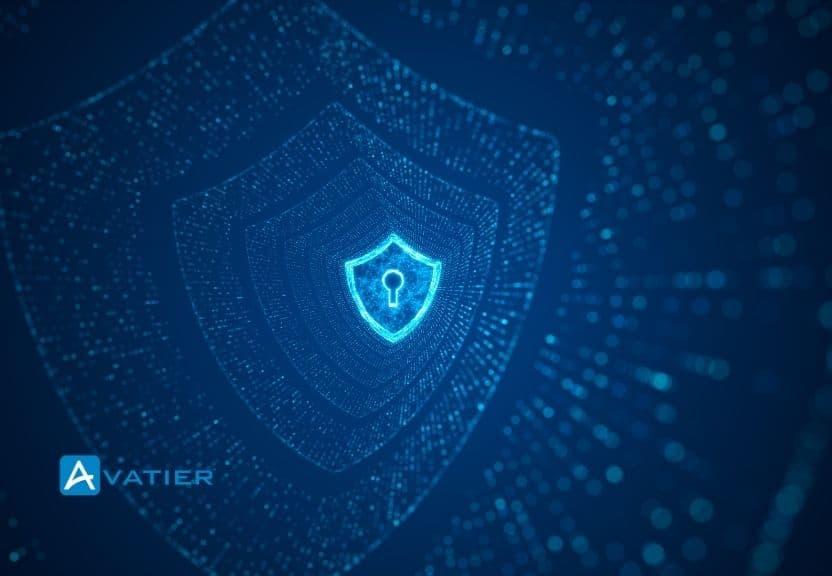October 20, 2025 • Mary Marshall
Emergency Response Protocols: AI-Driven Crisis Management in Cybersecurity
Discover how AI-powered identity management transforms emergency response protocols during cybersecurity crises, reducing breach costs.

Cybersecurity emergencies demand immediate, coordinated responses that traditional manual processes simply can’t deliver. As we recognize Cybersecurity Awareness Month this October, it’s crucial to examine how AI-driven identity management is revolutionizing emergency response protocols during security incidents—providing the speed, intelligence, and resilience organizations need when facing digital crises.
The Rising Tide of Cybersecurity Emergencies
The stakes in cybersecurity continue to climb. According to IBM’s Cost of a Data Breach 2023 Report, the global average cost of a data breach reached $4.45 million, a 15% increase over three years. More concerning still, organizations took an average of 277 days to identify and contain breaches—a dangerous window during which attackers can move laterally through networks, exfiltrate sensitive data, and establish persistent access.
This timeline is particularly troubling when considering that 83% of organizations have experienced more than one breach, according to Ponemon Institute research. These statistics underscore why emergency response capabilities must evolve beyond manual playbooks toward intelligent, automated systems capable of responding at machine speed.
AI-Driven Identity Management: The Foundation of Modern Emergency Response
When security incidents occur, identity becomes the crucial control point. Identity Management Services that leverage AI can dramatically transform emergency response by:
- Automatic threat detection and isolation – AI analyzes user behavior patterns to identify anomalies indicating compromise
- Immediate privilege de-escalation – Instant reduction of access rights when suspicious activities are detected
- Coordinated containment workflows – Automated responses that limit lateral movement during incidents
- Accelerated forensic analysis – AI-enhanced investigation of affected identities and access patterns
Modern identity solutions like Avatier’s Identity Anywhere platform enable security teams to respond at machine speed, reducing the critical time between detection and containment. This capability has become essential as threat actors increasingly exploit the gap between human detection and response.
The Four Pillars of AI-Enhanced Emergency Response
Effective emergency response protocols built on AI-driven identity management rest on four critical pillars:
1. Automated Incident Triage and Response
When seconds count, automation delivers consistency. AI-powered identity governance can:
- Instantly implement emergency access restrictions based on threat intelligence
- Automatically enforce isolation protocols for compromised accounts
- Deploy just-in-time privileged access for incident responders
- Create comprehensive audit trails documenting all response actions
According to Gartner, organizations that implement automated response capabilities reduce the average cost of security incidents by 48%, primarily by limiting lateral movement opportunities for attackers.
2. Adaptive Access Control During Crises
During cybersecurity emergencies, traditional static access policies are insufficient. Access Governance solutions with AI capabilities can dynamically adjust authentication requirements based on real-time risk assessment:
- Increase verification steps for high-risk resources during incidents
- Deploy step-up authentication when unusual patterns are detected
- Implement geographic access restrictions during targeted attacks
- Enforce temporary segregation of duties to prevent unauthorized escalation
This flexibility enables organizations to maintain business operations during incidents while simultaneously strengthening security controls around critical systems and data.
3. Coordinated Response Workflows
AI excels at orchestrating complex response sequences across disparate systems. Modern identity management platforms integrate with incident response tools to create unified workflows that:
- Synchronize response actions across multiple security tools
- Alert appropriate stakeholders based on incident classification
- Coordinate temporary access assignments for emergency response teams
- Manage communication channels during crisis situations
Research from the SANS Institute indicates that organizations with integrated identity and security incident response workflows reduce containment time by an average of 73% compared to those relying on manual coordination.
4. AI-Assisted Recovery and Remediation
After containing a security incident, organizations must rapidly restore normal operations. IT Risk Management systems enhanced with AI capabilities accelerate recovery by:
- Automating account remediation and password resets at scale
- Verifying the integrity of identity stores post-incident
- Identifying and addressing identity security gaps exploited in the attack
- Providing risk-based recommendations for strengthening access controls
Real-World Application: Financial Services Case Study
A global financial services organization implemented Avatier’s AI-driven identity management solution as the cornerstone of their emergency response protocols. When facing a sophisticated phishing attack targeting privileged users, the organization’s security operations center activated their crisis response protocols, which triggered:
- Automatic suspension of compromised accounts within 30 seconds of detection
- Immediate elevation of authentication requirements for all administrative access
- Deployment of emergency access protocols for incident responders
- AI-assisted behavioral analysis to identify additional potentially compromised accounts
The result: containment achieved within 45 minutes versus their previous average of 36 hours. Estimated savings exceeded $3.2 million compared to similar previous incidents, primarily due to prevented data exfiltration and reduced operational disruption.
Building Resilient Identity Infrastructure for Emergency Response
As we observe Cybersecurity Awareness Month, organizations should evaluate their identity infrastructure’s readiness to support emergency response protocols. Key considerations include:
Establishing Zero-Trust Foundations
Zero-trust principles provide the architectural foundation for effective emergency response. By implementing continuous verification and least privilege access by default, organizations create an environment where containing security incidents becomes significantly more manageable.
Avatier’s Nelson Cicchitto recently highlighted how “Avatier’s AI Digital Workforce aligns with this year’s theme by helping enterprises secure their world – automating identity management, enabling passwordless authentication, and driving proactive cyber resilience against phishing, ransomware, and insider threats.”
Deploying Multi-Factor Authentication Integration
Multifactor Integration represents a critical control point during security incidents. Organizations should ensure their identity management systems can dynamically adjust MFA requirements based on risk factors, enabling:
- Immediate implementation of additional verification factors during incidents
- Temporary exclusion of potentially compromised authentication methods
- Secure emergency access channels for authorized responders
- Risk-based authentication that adapts to changing threat conditions
According to Microsoft’s Digital Defense Report, organizations implementing MFA see a 99.9% reduction in account compromise risk, making it an essential component of incident response capabilities.
Implementing Automated User Provisioning for Recovery
After a security incident, rapidly re-establishing secure access is crucial. Automated user provisioning capabilities enable organizations to:
- Quickly restore legitimate access after security lockdowns
- Deploy temporary emergency access roles with appropriate constraints
- Verify and document all access changes during recovery operations
- Return to normal operations with proper governance controls
Creating AI-Powered Incident Response Playbooks
Modern identity management platforms allow security teams to define intelligent response playbooks that can:
- Automatically escalate responses based on threat severity
- Adapt containment strategies based on attack patterns
- Incorporate real-time threat intelligence into response decisions
- Provide decision support for complex containment scenarios
Dr. Sam Wertheim, CISO of Avatier, notes, “Cybersecurity is everyone’s responsibility, but it doesn’t have to be everyone’s burden. Our mission is to make securing identities simple, automated, and proactive—so organizations can improve cyber hygiene, reduce risk, and build resilience during Cybersecurity Awareness Month and beyond.”
The Future of AI-Driven Emergency Response
As AI continues to evolve, we’re witnessing the emergence of even more sophisticated emergency response capabilities:
- Predictive incident response – AI that anticipates attack progression and proactively implements containment measures
- Autonomous recovery operations – Systems that can self-heal identity infrastructure after attacks
- Continuous resilience assessment – AI that constantly evaluates response capabilities against emerging threats
- Natural language incident management – Voice-controlled emergency response for faster activation
Conclusion: Transforming Crisis into Resilience
In the high-stakes world of cybersecurity, emergency response protocols powered by AI-driven identity management transform potential disasters into manageable incidents. By implementing automated detection, containment, and recovery capabilities, organizations can dramatically reduce both the impact and cost of security breaches.
This Cybersecurity Awareness Month, security leaders should assess their emergency response protocols through the lens of identity—examining how AI-enhanced identity management can provide the speed, intelligence and coordination needed to respond effectively to today’s sophisticated threats.
The most resilient organizations recognize that effective emergency response isn’t just about reacting to incidents—it’s about building identity infrastructure that can adapt, respond, and recover automatically, turning potential crises into demonstrations of digital resilience.
By embracing AI-driven identity management as a cornerstone of emergency response protocols, organizations don’t just survive cybersecurity incidents—they emerge stronger, more secure, and better prepared for the evolving threat landscape.
For more insights on enhancing your security posture during Cybersecurity Awareness Month, visit Avatier’s Cybersecurity Awareness resources.









